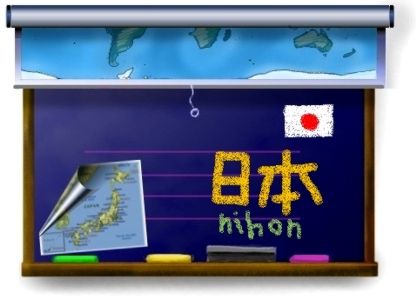SAMURAI HISTORY OF JAPAN
RULERS OF JAPAN 660 BCE - TODAY
MAPS OF WARLORD-INFESTED JAPAN
|
History of Japan as sliced by years on your calendar:
| 10,000 - 300 BCE | 300 BCE - 250 | 250 - 500 | 250 - 500 (pix) | 500 - 800 |
| 800 - 1220 | 1220 - 1500 | 1500 - 1700 | 1700 - 1926 | 1926 - TODAY |
History of Japan according to the Japanese's own periodization:
| J O M O N | Y A Y O I | K O F U N | KOFUN (pix) | H E I A N |
| KAMAKURA | NAMBOKUCHO | MUROMACHI | SENGOKU | MOMOYAMA |
| E D O | M E I J I | T A I S H O | S H O W A | H E I S E I |
History of Japan as divided by conventional timeline:
| Mythological Age | Prehistory | 1st Millennium | 2nd Millennium |
History of Japan based on what ruled at the time:
History of Japan according to who ruled at the time:
History of Japan as categorized by where the government was:
| Heaven | Ise | Yamato | Asuka | Nara | Kyoto |
| Rokuhara | Kamakura I | Kamakura II | Muromachi | Azuchi | Osaka |
| Edo | Tokyo I | Tokyo II | Pentagon | ||
History of Japan based on how it was ruled:
History of Japan highlights:
| Conquer of Japanese Isles | First Government | Landing of Buddhism |
| Two Imperial Courts | Gempei War | Mongol Invasion |
| Onin War | Unification | Invasion of Korea |
| Isolation | Americanization | After Both World Wars |
History of Japan as differentiated by slogans:
[Note
for this table: All blue letters between quotation marks are historical.
All others are summaries of what actually happened.]
Mythical History of Japan, Shintoist Genesis & Shinto Gods:
| Ise | Izumo | Amaterasu | Susanoo | Ninigi |
| Uzume | Shinto Gods | Animal Gods | Samurai Critter | Izanagi |
Site, design & Rap © 1996, 1997, 1998, 1999, 2000, 2001, 2002, 2003, 2004, 2005, 2006 Nina Wilhemina
|
Sources I tapped for this section: Nihon Shakai no Kazoku teki Kosei (Tokyo: 1948); Kono Shozo, Kokumin Dotoku Yoron (Tokyo: 1935); Anesaki Masaharu, Nichiren, the Buddhist Prophet (Cambridge, Mass.: Harvard University Press, 1916); Robert Cornell Armstrong, Light from the East, Studies of Japanese Confucianism (University of Toronto, Canada, 1914); Sasama Yoshihiko, Nihon kassen zuten (Yuzankaku, 1997); William Aston, Shinto: The Way of the Gods (London: Longmans, Green, 1905); Ruth Benedict, The Chrysanthemum and the Sword (Boston: Houghton Mifflin, 1946); Charles Eliot, Japanese Buddhism (London, 1935); Futaki Kenichi, Chuusei buke no saho (Yoshikawa Kobunkan, 1999); Kiyooka Eichii, The Autobiography of Fukuzawa Yukichi (Tokyo, Hokuseido Press, 1934); Konno Nobuo, Kamakura bushi monogatari (Kawade shobo shinsha, 1997); Nukariya Kaiten, The Religion of the Samurai (London: Luzac, 1913); A.L. Sadler, The Beginner's Book of Bushido by Daidoji Yuzan (Tokyo: Kokusai Bunka Shinkokai, 1941); A.L. Sadler, The Makers of Modern Japan (Tokyo: Tuttle, 1978); Satomi Kishio, Nichirenism and the Japanese National Principles (NY: Dutton, 1924); Suzuki D.T., Zen Buddhism and Its Influence on Japanese Culture (Kyoto: The Eastern Buddhist Society, 1938); Henri Van Straelen, Yoshida Shoin (Leiden: Brill, 1952); Robert Bellah, Tokugawa Religion; Sato Hiroaki, Legends of the Samurai (Overlook Press, 1995); Masaaki Takahashi, Bushi no seiritsu: Bushizo no soshutsu (Tokyo: Tokyo daigaku, 1999); Stephen Turnbull, Samurai Warlords (London: Blandford Publishing, 1992); Paul Akamatsu, Meiji 1868, Revolution and Counter-Revolution (Allen & Unwin, 1972); Nitobe Inazo, Bushido, The Soul of Japan (Tokyo: Tuttle, 1970); Paul Varley and Ivan Morris, The Samurai (Weidenfeld, 1970); Inoguchi and Nakajima, The Divine Wind: Japanese Kamikaze Force in World War II (Hutchinson, 1959), Seki Yukihiko, Bushi no tanjo (Tokyo: NHK, 2000); Amino Yoshihiko, ed. Edojidai no mikataga kawaruho (Tokyo: Yosensha, 1998). |


